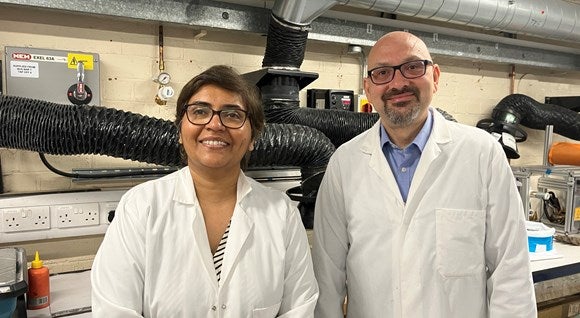Engineering researchers at the University of Edinburgh have been awarded a £125,000 ($160,000) grant from Greencoat UK Wind, a renewables investor, to advance their wind turbine recycling technique, which converts decommissioned wind turbine blades into powders that can be used to protect engineering and structural components, including new wind turbine blades.
As wind energy plays a crucial role in the UK's pursuit of net-zero emissions, the challenge of recycling wind turbine blades at the end of their 20–25-year lifespan has emerged as a significant engineering and environmental concern.
Wind turbine blades are typically composed of a complex composite material bonded together by an epoxy, a robust adhesive, and reinforced with fibres, making them challenging and costly to separate and recycle.
"The recycling of the fibre-reinforced, epoxy-based composites used in many applications, including wind turbine blades, has become of critical importance for net-zero targets," Professor Vasileios Koutsos from the University of Edinburgh's School of Engineering said in a press statement.
"We are delighted to have been awarded the funding for this innovative project and look forward to using our materials expertise to create a novel recycling technology that is likely to have considerable commercial impact," he added.
The powder coating innovation could provide protection to new wind turbine blades, safeguarding them from erosion. It could also be employed in various other applications within the built environment, such as preventing corrosion on suspension bridge cables, say the researchers.
In February, Danish wind turbine manufacturer Vestas unveiled a new chemical recycling process that can break down the epoxy resin in wind turbine blades into virgin-grade materials, which will eventually eliminate the need for landfill disposal when they are decommissioned.
“With the new solution, we can start now rather than waiting approximately 30 years for products with novel recyclable resins to reach end of life," a Vestas spokesperson told Energy Monitor at the time. "That means we can accelerate the timeline for blade recycling by decades and include epoxy blades currently in operation."









